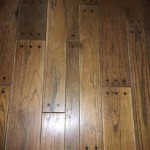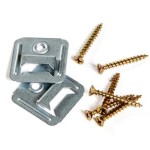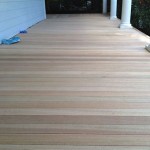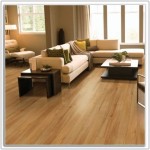How Much Does It Cost To Replace Engineered Wood Flooring?
Replacing engineered wood flooring is a significant home improvement project that can dramatically enhance a space's aesthetics and value. Understanding the costs involved is critical for budgeting and making informed decisions. The total expense can vary considerably, depending on factors such as the type of engineered wood, the size of the area, the complexity of the installation, and geographical location. This article provides a comprehensive overview of the costs associated with replacing engineered wood flooring.
Material Costs: Understanding Engineered Wood Options
The primary cost factor in replacing engineered wood flooring is the material itself. Engineered wood consists of a thin veneer of hardwood bonded to a core of plywood or high-density fiberboard (HDF). This construction provides stability and resistance to moisture, making it a popular alternative to solid hardwood. The cost of engineered wood flooring is directly proportional to the thickness and quality of the hardwood veneer, the core material, and any added features, such as enhanced water resistance or special finishes.
Lower-end engineered wood flooring, often featuring thinner veneers and simpler construction, can range from $3 to $6 per square foot. These options typically offer less durability and may not be suitable for high-traffic areas. Mid-range engineered wood, with thicker veneers and more robust core materials, generally costs between $6 and $10 per square foot. These products strike a balance between affordability and durability, making them suitable for a wider range of applications. High-end engineered wood flooring, featuring premium hardwood species, thicker veneers, and superior construction, can cost $10 per square foot and upwards, sometimes exceeding $15 per square foot. These options offer the look and feel of solid hardwood with the added stability of an engineered product.
The choice of wood species also affects the cost. Common species like oak, maple, and hickory are generally more affordable than exotic species such as Brazilian cherry, walnut, or Santos mahogany. Furthermore, factors like the wood's grain pattern, color variations, and surface texture can also impact the price. Wide plank flooring, for example, tends to be more expensive due to the increased material and selective harvesting required.
Beyond the wood itself, other material costs to consider include underlayment, moisture barriers, and transition strips. Underlayment provides cushioning, sound insulation, and moisture protection. The cost can range from $0.50 to $2 per square foot, depending on the type and thickness. Moisture barriers are essential, especially in basements or over concrete subfloors, and typically cost around $0.20 to $0.50 per square foot. Transition strips, used to seamlessly connect different flooring types or to cover expansion gaps, can cost between $5 and $20 per piece, depending on the material and style.
Labor Costs: Professional Installation vs. DIY
Labor costs represent a significant portion of the total expense when replacing engineered wood flooring. The cost of professional installation can vary depending on the complexity of the project, the installer's experience, and the geographical location. Generally, labor costs range from $3 to $8 per square foot. This typically includes removing the old flooring, preparing the subfloor, installing the new engineered wood, and installing baseboards or trim.
Several factors can influence the labor cost. A complex layout with angled walls, intricate patterns, or the need for extensive subfloor leveling can increase the time and effort required, thus increasing the labor charges. Removing existing flooring can also add to the cost, particularly if it is difficult to remove or requires special equipment. The condition of the subfloor is critical. If the subfloor is uneven, damaged, or not properly prepared, additional labor may be required to level it, patch holes, or apply a self-leveling compound. This can add significantly to the overall cost.
Hiring a qualified and experienced installer is crucial to ensure a successful installation. A professional installer can properly prepare the subfloor, ensure proper alignment and spacing, and address any potential issues that may arise during the installation process. This can prevent problems such as buckling, gapping, or squeaking in the future. It is recommended to obtain multiple quotes from different installers and to check their references and credentials before making a decision.
While DIY installation can save on labor costs, it is not recommended for everyone. Installing engineered wood flooring requires specific tools, skills, and knowledge. Mistakes made during the installation process can be costly to correct and can compromise the integrity and appearance of the flooring. If choosing the DIY route, it is important to thoroughly research the installation process, gather the necessary tools and materials, and carefully follow the manufacturer's instructions. It is also advisable to have some experience with home improvement projects before attempting a large-scale flooring installation.
Additional Costs and Considerations
Beyond the material and labor costs, several other expenses can impact the overall cost of replacing engineered wood flooring. These include the cost of removing and disposing of the old flooring, moving furniture, repairing or replacing damaged subflooring, and any necessary permits or inspections.
Removing and disposing of the old flooring can cost between $1 and $3 per square foot, depending on the type of flooring and the disposal fees in the area. Some installers include this service in their overall quote, while others charge it separately. Moving furniture can also add to the cost, especially if it is heavy or bulky. It may be necessary to hire professional movers or to rent furniture dollies to move the furniture safely. If the subfloor is damaged or uneven, it may need to be repaired or replaced before installing the new flooring. This can add significantly to the cost, particularly if extensive repairs are required.
In some areas, permits may be required for flooring installations, especially if the project involves structural changes or affects the building's fire safety. The cost of permits can vary depending on the location and the scope of the project. It is important to check with the local building department to determine if any permits are required.
Unexpected costs can also arise during the installation process. Hidden problems, such as mold growth, water damage, or asbestos-containing materials, may be discovered once the old flooring is removed. Addressing these problems can add significantly to the overall cost. It is advisable to budget for unexpected costs when planning a flooring replacement project.
When calculating the total cost of replacing engineered wood flooring, it is important to consider the long-term value and benefits. Engineered wood flooring can increase a home's value, improve its aesthetics, and provide a durable and comfortable surface to walk on. By choosing high-quality materials and hiring a qualified installer, homeowners can ensure a successful and long-lasting flooring installation.
Furthermore, homeowners should factor in the ongoing maintenance costs associated with engineered wood flooring. While engineered wood is relatively easy to maintain, it requires regular cleaning and occasional refinishing to keep it looking its best. These costs should be considered when evaluating the overall cost-effectiveness of engineered wood flooring compared to other flooring options.

How Much Does It Cost To Install Hardwood Flooring Inc

Average Hardwood Flooring S In 2024 Forbes Home

Cost To Remove Hardwood Floors Mk Remodeling

How Much Does It Cost To Install Engineered Hardwood Floors

How Much Should Wooden Flooring Cost In 2024 Checkatrade

Flooring Installation Cost 2024 Guide Modernize

Cost To Install Hardwood Floors The Home Depot

How Much Does Floor Repair Cost In 2024 Forbes Home

Wood Flooring Guide 2024 How Much Does Wooden Cost

How Much Does Flooring Installation Cost 2024 Guide
Related Posts








